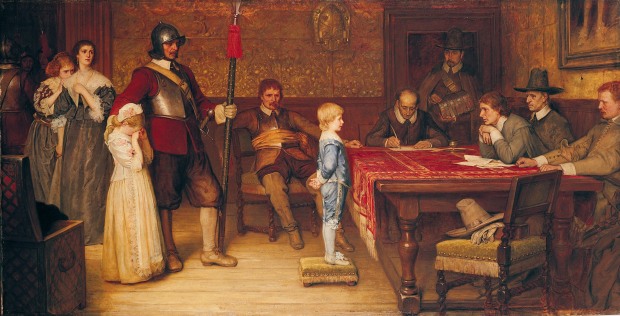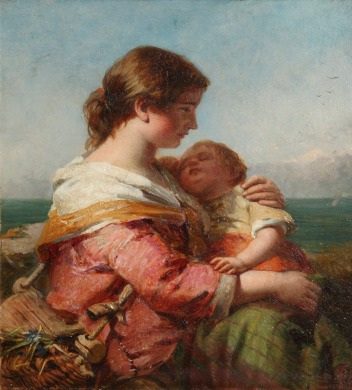
Jan Abrahamsz Beerstraten was the eldest and most successful of an artistic family. He specialised in wintry views of Dutch townscapes and lived in Amsterdam where he produced his earliest dated scenes in the 1650s.

Jan Abrahamsz Beerstraten was the eldest and most successful of an artistic family. He specialised in wintry views of Dutch townscapes and lived in Amsterdam where he produced his earliest dated scenes in the 1650s.

In the myths of Ancient Greece Helen of Troy was considered the most beautiful woman in the world. She has since has been a source of inspiration for artists who frequently represent her as the personification of ideal beauty.
 On the third Sunday of June each year we celebrate Father’s Day and the important role which fathers play in our society.
On the third Sunday of June each year we celebrate Father’s Day and the important role which fathers play in our society.

Mothering Sunday was once the day on which people would visit their “mother” church, but has now become an occasion for honouring the mothers of children.

Christmas is the one time of year when busy families make the time to come together, to share stories, food and gifts and to reconnect as a loving unit. This is quality time is which is all the more important when there have been new arrivals to the family. During an often frantic period, this painting from the early sixteenth century can still offer a few moments of calmness and reflection. It reminds us of the importance in spending time with one’s children and in making time to visit one’s extended family and friends. But it also prompts us to remember the religious significance of Christmas and how we should strive to be generous of our time and resources to others.

Along with others such as Claude Monet and Auguste Renoir, Degas is regarded as one of the founding fathers of the Impressionism movement. Impressionism is credited with laying the foundations for much modern art as it transgressed many longstanding traditions in painting.

The subtitle of this work describes Diadem as a yacht in order to differentiate her from many other larger warships of the same name that served the nation in our Royal Navy’s long and illustrious history. In the rating system of the Royal Navy ‘cutter’ was the lowest classification, but they frequently served important supporting roles. Cutters were designed to be light and fast and their rigs were designed to give excellent manoeuvrability. Because of this, in the nineteenth century, they were often used for coastal patrol, transferring important personnel or for small ‘cutting out’ raids, attacks on larger boats by smaller vessels.

The young Henry Stacy Marks was a keen artist and showed such little aptitude for business that his father preferred him to go to art school than to join the family firm of solicitors. It turned out to be a prescient decision as the business failed and Marks had to support not only his wife but his mother and three younger brothers on the proceeds of his art.
This exhibition was first mooted by curator Christopher Newall nearly a decade ago. It seems incredible that it has taken this long for the Walker to celebrate the City of Liverpool’s longstanding association with one of the most significant British art movements. Particularly given the enduring popularity of the Pre-Raphaelite Brotherhood and the wealth of its treasures held by the galleries of Merseyside.
Liverpool has always had a mischievous, rebellious side, one which has both attracted and nurtured creatives and the leftfield. Thus it was only natural that a small group of rebellious, hot-headed young men found a ready audience for their work in this city. (more…)
Visitors to Sudley House near Liverpool are able to enjoy several examples of the work of the great British landscape painter JMW Turner. The Wreck Buoy is the shining example; it captures Turner’s obsession with the sea at the height of his power. Whilst a controversial figure in his own lifetime, his reputation as a master is now assured. Known as the great ‘painter of light’ Turner’s influence on the later Impressionist movement is now firmly acknowledged.
The painting’s impressive dimensions allow the viewer to ruminate on both the majesty and ferocity of nature. Its location in the house of ship owner and merchant George Holt reminds us of Liverpool’s reliance on the sea for trade and prosperity. Yet for all of Turner’s ability to romanticise the stormy weather that surrounds our small island nation, this painting represents a much darker side. The wreck buoy floats atop the unrelenting wave warning sailors of the danger beneath. It marks the spot where the bodies of their peers lie. The rainbow arching over the horizon points down towards the buoy, its vibrant colours have been drained by the storm and are all but lost on the canvas. It is a stark reminder of the futility of human endeavour.